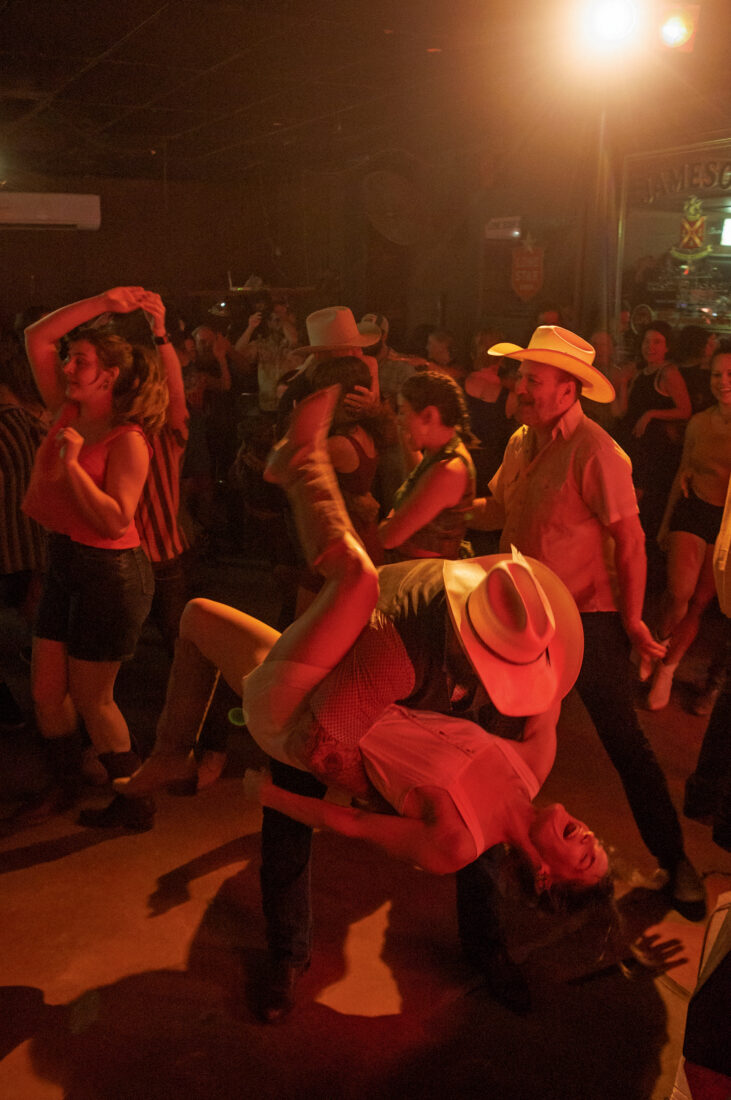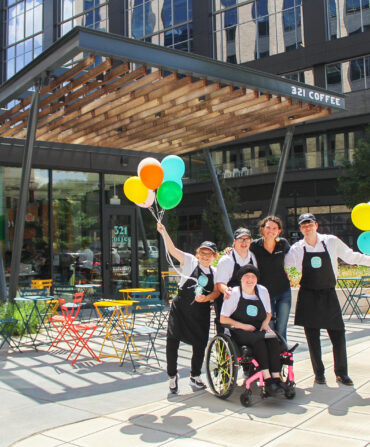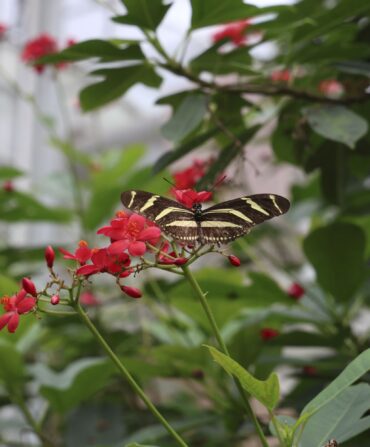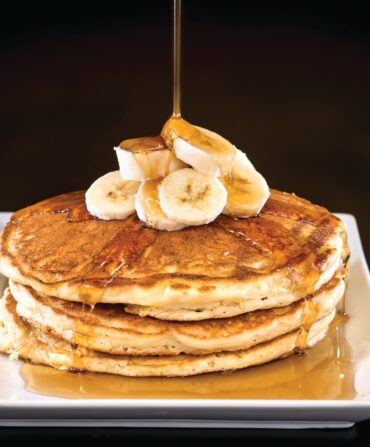On a steamy night in Austin, Texas, the country musician Blake Whitmire crooned a familiar love song, bearded face beaming in the stage lights. We smiled at each other in brief recognition, and then I was whirling past in a series of rapid spins, the room blurry with kinetic joy. Legs burning, sweat dampening my hair, I fell back into the arms of my dance partner and the familiar rock step.
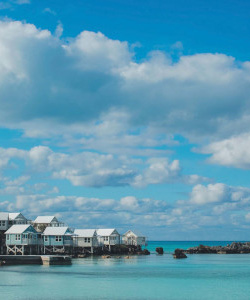
This is the kind of breathless, exuberant moment that happens all evening long at the White Horse: one of the great honky-tonks, where the past and present coexist in one gloriously tangled jumble. Weekends, the bar sees throngs of tourists faced with the tough choice of a Ranch Water, a margarita, a classic Lone Star, or a frosty pint of craft IPA. But on weeknights, its vibrant dance scene, friendly familiar faces, and live local bands keep it a holdout of Austin culture amid a changing city.
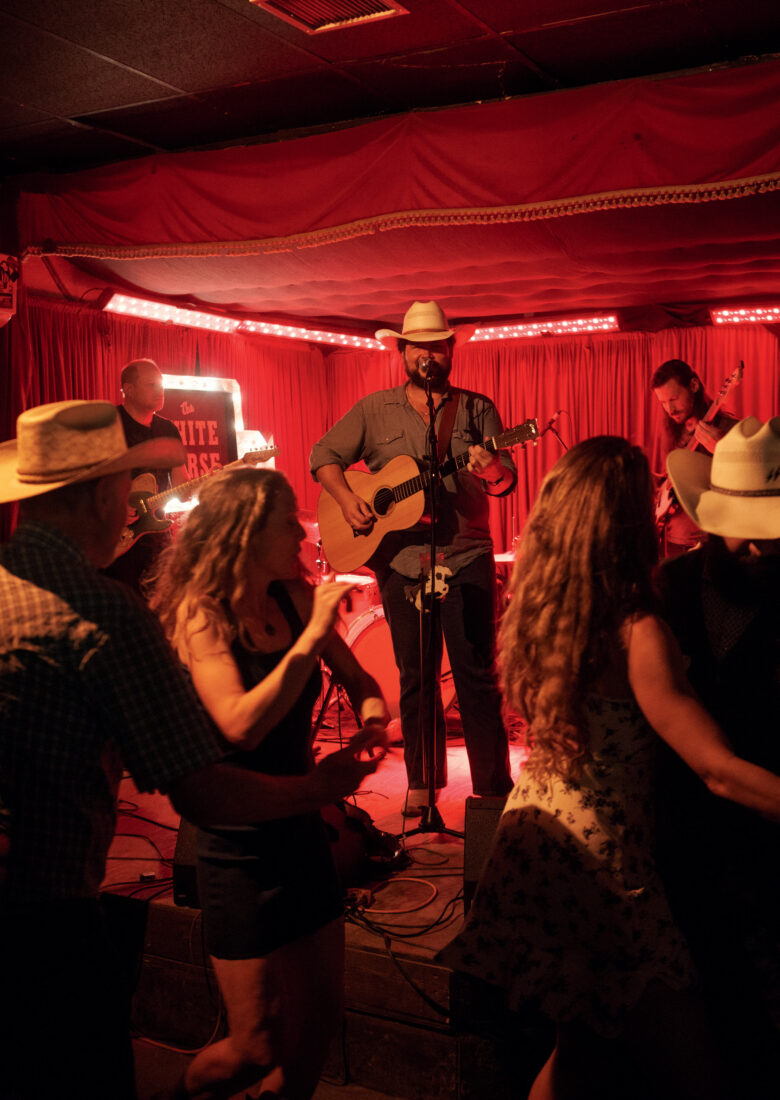
Ben Ruggiero, my friend and an avid two-stepper, had texted me just days before: “There’s been a big shift in the city,” he wrote. “It’s kind of making people honky-tonk like their life depends on it.” I booked a flight from New York back to my former longtime home of Austin, my only plan to dance my way through the old haunts.
I first set boots in the White Horse more than a decade ago, when a friend suggested I start two-stepping if I wanted to meet single guys. To me, partner dancing seemed formal and old-fashioned, but I joined her one evening when the bar, sitting opposite the commuter tracks that cut across downtown East Austin, was still newish. Dancers occupied every inch of the space—swaying, hopping, whirling, and swinging to the music. It was rowdy. It was romantic. I wanted to learn everything I could.
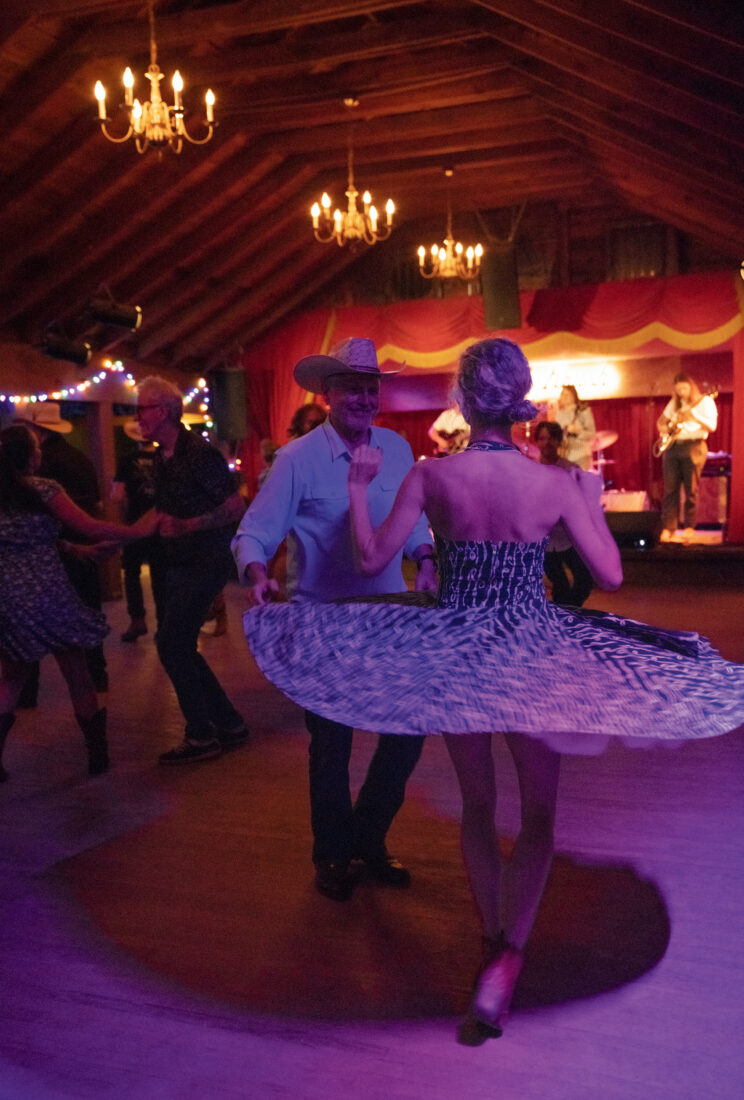
Two-stepping is a means of preserving time: in its rhythm; in the classic Western wear dancers often don (leather-soled boots especially, in part because they glide with ease); and in its connections to a long trail of regional and folk traditions. It was born among immigrants in the 1870s, when German, Czech, and Polish settlers gathered in rural dance halls to connect with one another and their old-world traditions amid this dusty, sweltering new landscape. Their quick-quick, slow-slow foxtrot evolved into the traveling shuffle that defines the traditional Texas two-step. Later, in the 1920s, Bob Wills and His Texas Playboys began playing Western swing at ranch dances, where residents would clear the furniture for the dancers—perhaps it was in those modest rural homes that a more swing style of two-stepping ignited.
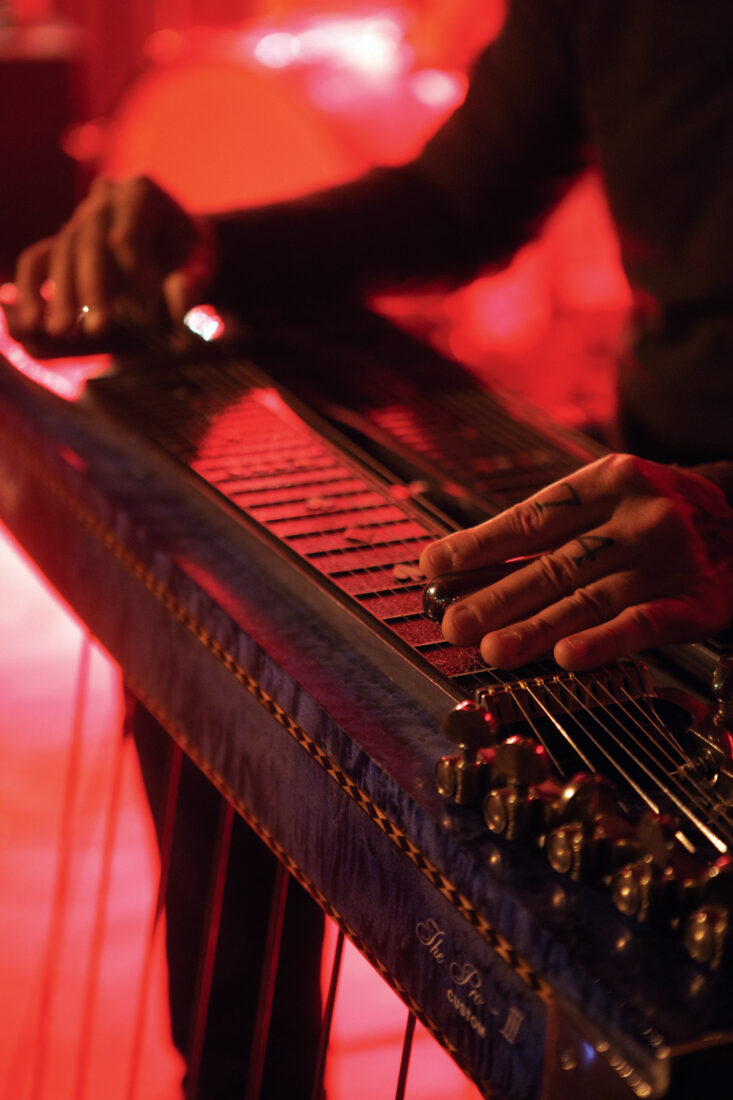
It’s no surprise that Austin, a city that shaped itself largely around the bucking of traditions, embraced this more malleable, energetic version. Dance instructor Vanessa Vaught, who founded Double or Nothing Two-Step to offer dance lessons around town, has her own term for the city’s unique variation: the honkytonk two-step. “It’s really the jitterbug,” she explains, “where you start on the slow step, then blend it with a four-count swing: Rock step, something happens. Rock step, something happens. We just call it the two-step.”
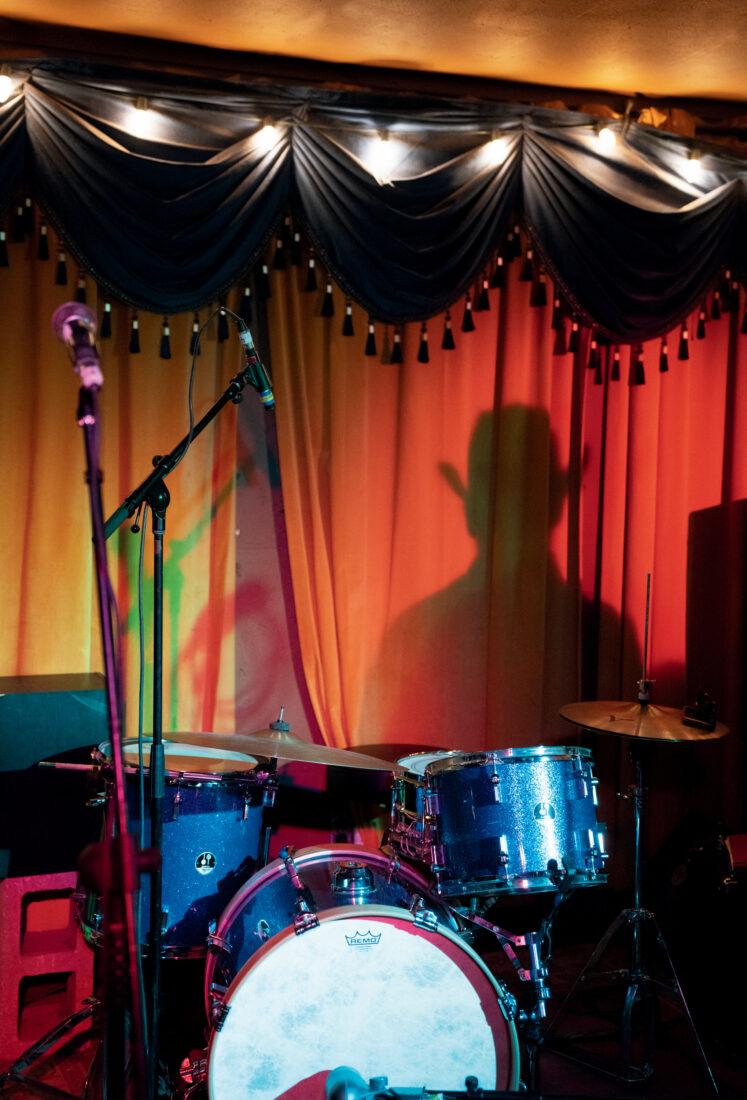
Austin’s classic dives—including Donn’s Depot, the Little Longhorn Saloon (formerly known as Ginny’s), the Continental Club, and Sam’s Town Point—have long provided a gathering place for musicians and dancers, and their sense of temporal immutability is part of their charm. Perhaps most well-known, the Broken Spoke has fueled dancers with cold beer and chicken-fried steak since 1964. But the newer generation of bars like the White Horse, the ABGB, and Sagebrush, along with musician Ramsay Midwood’s revival of Sam’s Town Point in 2017 (when he took over as owner), have continued to both nurture and evolve the two-step—and the community that carries it forward.
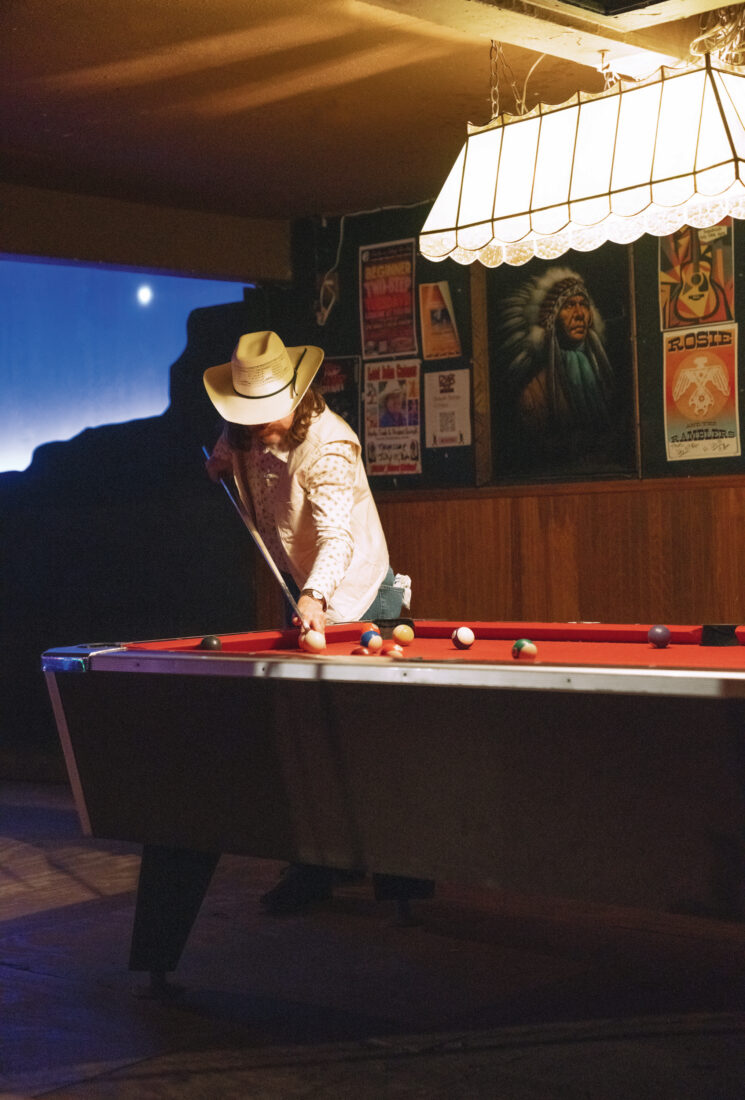
On any given night of the week, dancers will migrate between venues, starting, say, with Sam’s Town Point, a “lowfalutin” bar with what Midwood calls a “peopled by the people” atmosphere—wood-paneled walls, friendly dogs roaming around, a community bulletin board papered with signs for yard sales and dance lessons. Bar-goers can purchase buckets of Shiners or a bite from the hot-dog stand tucked among the live oaks. If Midwood himself is playing the late show, dancers will stay for his bluesy, psychedelic Americana. (His sultry song “Esther” always inspires a full floor, in part thanks to bassist Jeff Johnston’s eerie, warbling accompaniment on a handsaw.)
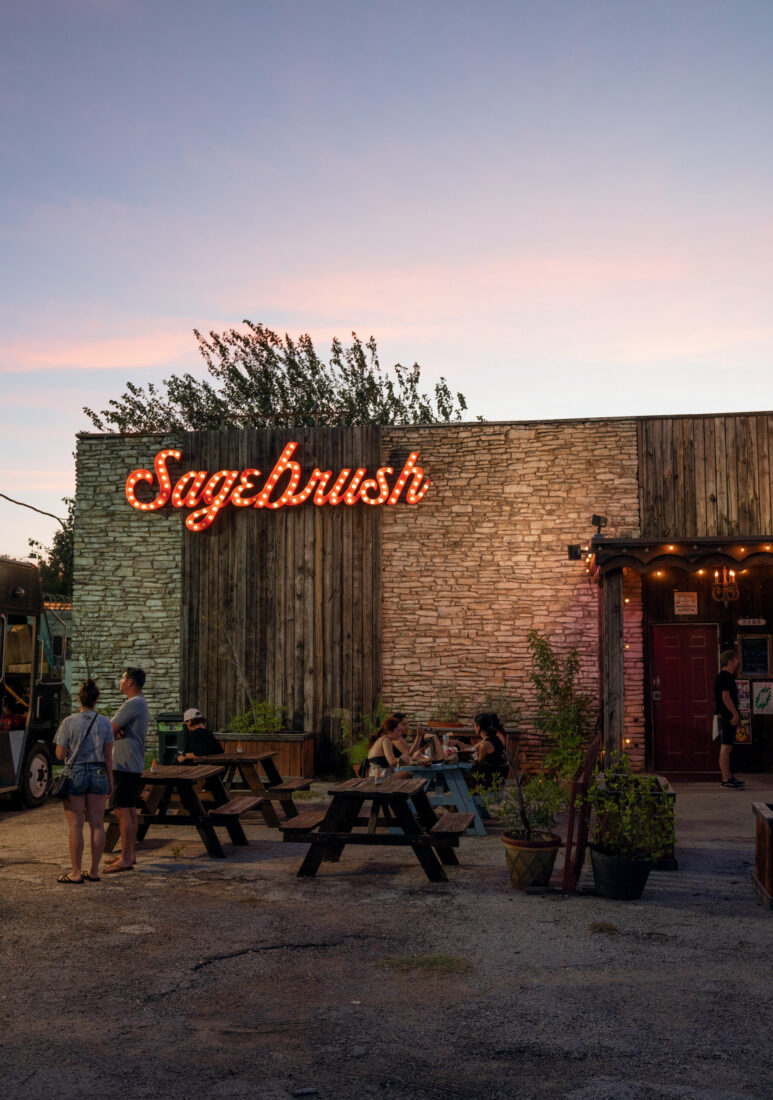
On Sundays at Sagebrush, the Mellows, who sound more Everly Brothers than honky-tonk, are nevertheless a favorite among two-steppers. Sagebrush’s spacious oak dance floor recalls the old dance halls of rural Texas and provides enough room for newcomers to practice moves they’ve learned from lessons with Vaught at Double or Nothing, Eric Moreno at Native Texan Two Step, or Beth Coffey at the White Horse. Local beers on tap line the bar’s back wall—Live Oak, Independence, and Zilker are just a handful of the standouts representing Austin’s ever-growing brewery scene. The Mexican food trailer BBQ Frank parks out front, with tasty queso and steak tacos. Out back, the vintage clothing shop Ramblin’ Rose hides inside a 1972 Airstream.
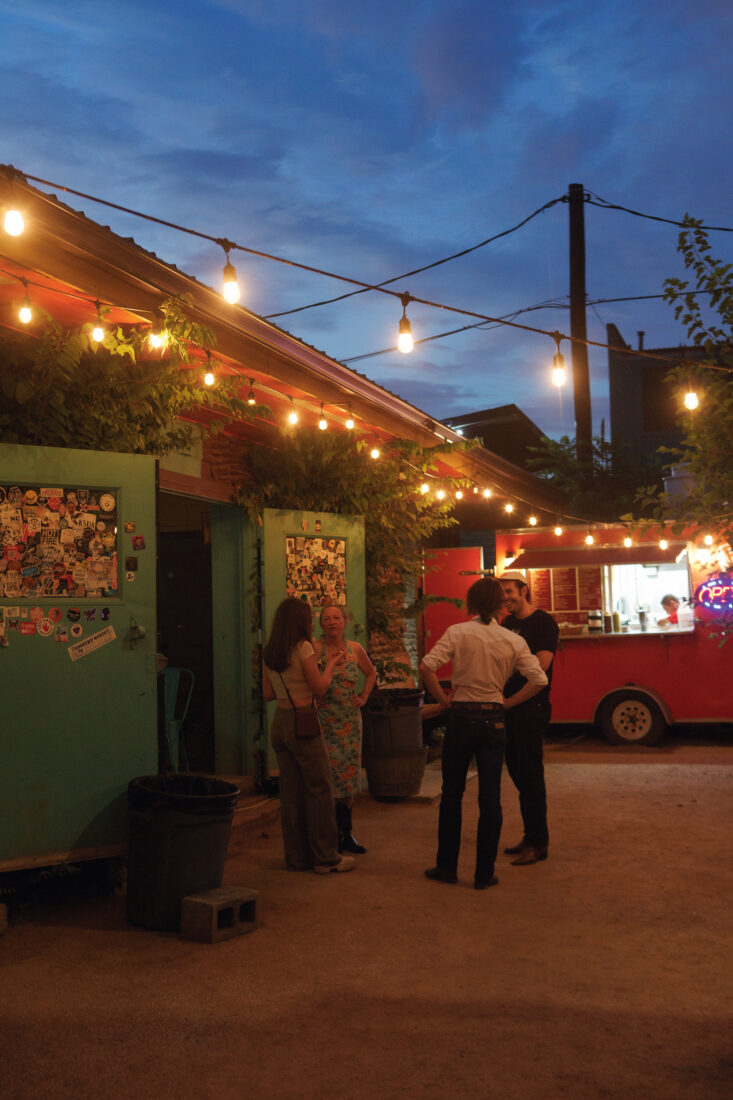
Near the end of the night, dancers often head to—where else?—the White Horse, where such local artists as Rosie and the Ramblers, Jenny and the Corn Ponies, Croy & the Boys, and Armadillo Road play long past midnight. At closing time, the bouncer flicks on the bright overhead lights, revealing the ragged patch of exposed cement where years of dancers have worn clean through the tiles.
Like many Southern cities, Austin has seen so much change—the population spike, the influx of tech wealth. For a city that’s always prided itself on being “weird,” I’ve sometimes worried that it’s starting to feel just like anywhere else.
As I approached the White Horse this time, my worries faded. From the bar’s open door came the warm sounds of Blake Whitmire’s set, already underway. On the dance floor, I spotted many of the longtime dancers—older, but with their same high energy and individuality. There were younger dancers, too, who reminded me of myself back when I’d regularly spin, step, and swing late into the night.
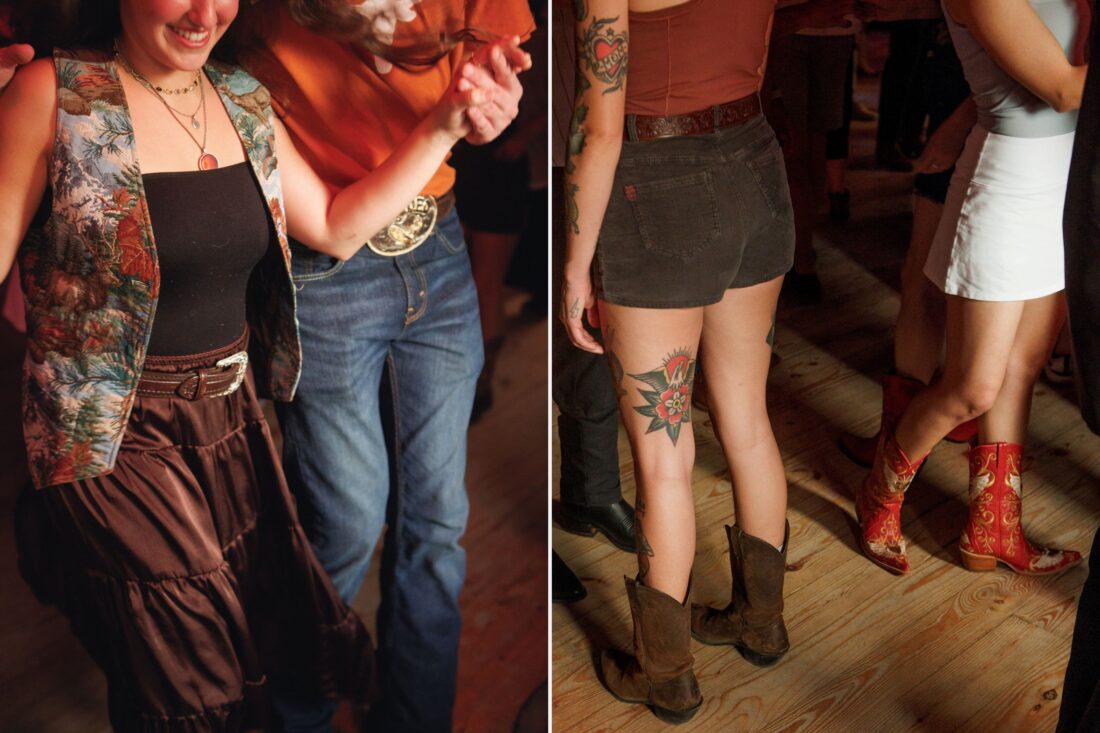
The heart of the Austin scene is clearly still beating strong. What has changed over time, though, is that the sense of welcome has increased. While the dance needs a clearly defined lead and follow to function, now any gender can fulfill these roles. As local dancer Ari Leo Frankel told me, “I started my journey as a lead, but learning to follow opened up whole new ways of connecting to my dance partners.”
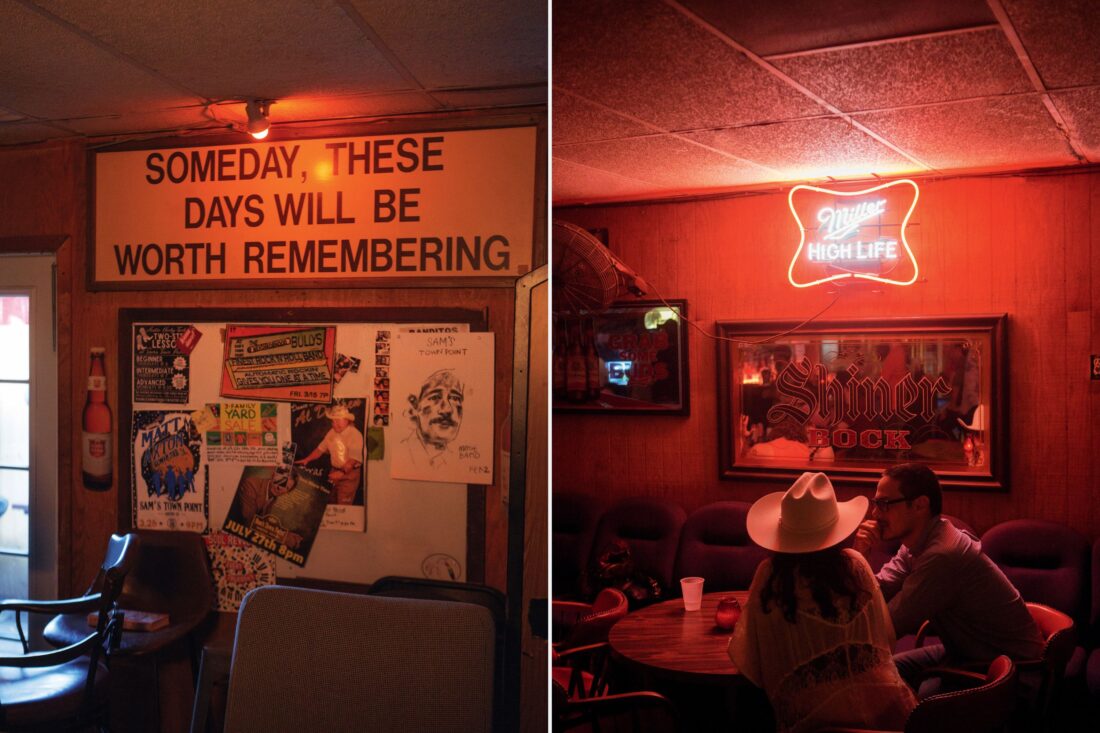
Although the growing emphasis on lessons may result in less fly-by-the-seat-of-your-Wranglers learning on the dance floor, it’s easy to see that honky-tonk culture is a great uniter. Maybe it’s the inherent closeness of the dance that offers so much appeal. The honkytonk two-step leaves little room for the anxieties and noise of our day-to-day lives—all that matters is connecting with the music and each other.
Soon after my visit, I caught up with Denis O’Donnell, who cofounded the White Horse (and later, Sagebrush). Like most of us, O’Donnell has an abiding affection for Austin’s honky-tonk two-step. “It’s just romantic,” he says. “All that spinning. I look at it like the way the planets spin around. It’s love. It’s the gravity of love.”


